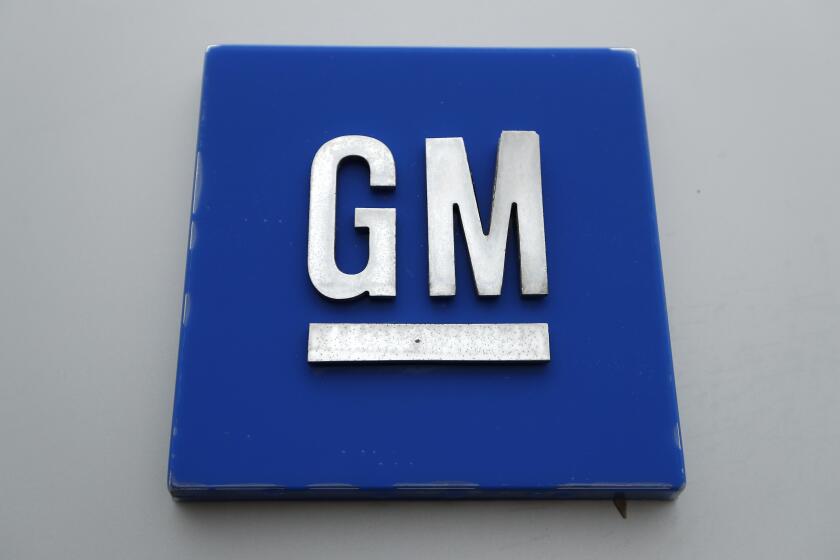Why is this GE ad outperforming almost every other Olympics spot?
- Share via
An advertising campaign that has held the attention of Olympics viewers longer than almost any other spot on television does not feature athletes, or their parents, or cars.
It’s set on a factory floor.
But the latest campaign by General Electric cuts to the heart of a crucial issue for companies and their workers today: the changing nature of manufacturing.
The GE ads, which appeared on more than 100 million screens in the last two weeks, shows a woman named Sarah building a jet engine. In one version, she explains to a touring family that GE can be “digital and industrial” – it builds machines that talk to each other, but people program those robots.
“This is me, using a wrench to build a jet engine,” Sarah says.

In another spot, when a confused youngster asks if the man working on the next closest engine is a robot, Sarah drills home her point. “That’s my co-worker, Earl. He builds jet engines with his human hands.”
Brand polishing? Definitely. At a time when Donald Trump and Hillary Clinton are criticizing trade deals and promising to return factory jobs to the U.S., GE has touted its “reshoring” efforts, saying it has returned to America jobs making refrigerators, washing machines and other products.
But as economists note, manufacturing looks nothing like it used to. Companies like GE rely on machines more than ever. The result is fewer jobs demanding higher skills.
With its ad, GE is trying to assure viewers that humans are still in charge. And that a 120-year-old conglomerate is as good a place as any Silicon Valley start-up for a skilled technician to build a career.
“The whole point is you can’t have this digital industrial company without the humans behind it,” said Andy Goldberg, GE’s chief creative officer, who developed the ad.
That message apparently resonates. Olympics viewers watched 98% of the GE ad on average, more than any other spot besides one from Folgers among 200 brands that spent at least $500,000 to air an ad during the Games, according to data from ISpot.tv, a company that tracks TV ad impressions.
“There’s some cognitive dissonance…. There are normal everyday folks, old-fashioned folks, if you will, juxtaposed against a great big jet engine,” said Jason Damata, the chief executive of Fabric Media, a branding agency in Santa Monica.
The Olympic spot follows one that GE released in September 2015 featuring a son trying to explain to his father that the job he took at GE will not require manual labor.
When his father hands him his grandfather’s hammer to celebrate, the son tells him “GE makes powerful machines, but I’ll be writing the code that will allow those machines to share information with each other.”
Goldberg, the chief creative officer, said that ad successfully attracted the attention of young engineers. Job applications to GE increased eightfold in the months after it was released, the company said.
That same talent pool is the target of a Snapchat smartphone filter GE released Tuesday. It turned half of a user’s selfie into a robot, adorned with the tagline “digital industrial.”
There are 5 million fewer U.S. factory jobs today than 16 years ago. Yet industry is facing a shortage of people with the skills to work in newly automated factories.
A 2014 survey of more than 450 manufacturing executives, conducted by the nonprofit Manufacturing Institute and Deloitte, found that 63% of them projected that there would be a lack of skilled production workers, such as machinists and technicians, by 2020.
The report concluded that 2 million manufacturing jobs would go unfilled in the next decade.
“You have a finite audience of people who will be the future,” Goldberg said, “so the sooner you can engage them and get them involved, the greater affinity they’ll have to the brand.”
Follow me @NatalieKitro on Twitter
More to Read
Inside the business of entertainment
The Wide Shot brings you news, analysis and insights on everything from streaming wars to production — and what it all means for the future.
You may occasionally receive promotional content from the Los Angeles Times.











